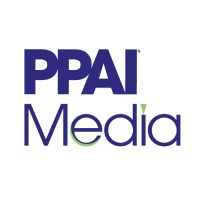Earlier this week, the U.S. Environmental Protection Agency released a proposal to adjust the scope of its reporting regulations for certain perfluoroalkyl and polyfluoroalkyl substances – better known as PFAS – under the Toxic Substances Control Act.
- The change is intended to make these requirements more practical to implement and to reduce unnecessary and potentially redundant reporting requirements for businesses while maintaining the agency’s ability to obtain important use and safety information on PFAS chemicals.
The EPA finalized a rule In October 2023 intended to provide the public with the largest database of PFAS – aka “forever chemicals” – made and used in the United States. That rule, currently still in effect, requires all manufacturers, including importers, of PFAS and PFAS-containing articles in any year since 2011 to electronically report information related to PFAS uses, production volumes, disposal, exposures and hazards.
- The agency postponed the deadline for reporting, currently set to begin April 13, 2026, with a due date of October 13.
According to an EPA press release, the proposed changes will reduce reporting burdens and provide greater regulatory certainty to industry, resulting in a net reduction in cost while ensuring that EPA still gathers the most relevant PFAS data.
“Today’s proposal is grounded in common sense and the law, allowing us to collect the information we need to help combat PFAS contamination without placing ridiculous requirements on manufacturers, especially the small businesses that drive our country’s economy,” said EPA Administrator Lee Zeldin.
What Changes Are Proposed?
Among other things, the EPA is specifically proposing to exempt reporting on activities that manufacturers are least likely to know or reasonably determine, including:
- PFAS manufactured (including imported) in mixtures or products at concentrations 0.1% or lower.
- Imported articles.
- Certain byproducts.
- Impurities.
- Research and development chemicals.
- Non-isolated intermediates.
The agency is also proposing clarifications of what must be reported in certain data fields and another adjustment of the data submission period. Once the official notice is published in the Federal Register, the EPA will accept comments on the proposed changes for 45 days in docket #EPA-HQ-OPPT-2020-0549 on www.regulations.gov.
What Are PFAS?
First discovered in the 1930s, PFAS chemistry has been appearing in consumer and industrial products since the 1940s. The substances have been incorporated in a broad range of goods to provide water- and stain-resistant properties, nonstick surfaces, flexibility and durability, and other capabilities.
Common consumer products that contain PFAS include grease-resistant paper, fast food containers, microwave popcorn bags, pizza boxes and candy wrappers. PFAS can also be found in:
- Nonstick cookware.
- Stain-resistant coatings used in upholstery and fabrics.
- Water-resistant clothing and outerwear.
- Cleaning products.
- Personal care products like shampoo and dental floss.
- Cosmetics like nail polish and eye makeup.
- Paints, varnishes and sealants.
State And Other PFAS Regulations
More than a dozen U.S. states have enacted laws regulating or prohibiting the use of PFAS in consumer products, and in August, the European Chemicals Agency (an agency of the European Union) published an updated proposal to restrict PFAS under the EU’s REACH chemicals regulation.
RELATED: Catch Up On Current State Laws Regulating PFAS Chemicals
As of October 1, 2025, 15 states have enacted laws limiting or otherwise regulating PFAS in consumer products, with similar bills proposed in six more. Their focus on PFAS has typically centered on various product categories, namely:
- Food packaging.
- Cosmetics or personal care products.
- Children’s products.
- Textiles.
- Fabric, carpets/rugs and upholstery.
The Canadian federal government is also working on regulating PFAS compounds through a “phased prohibition,” although no bans relevant to consumer goods have been enacted thus far.
PFAS regulation remains an annual hot topic at PPAI’s Responsibility Summit, as these laws continue to expand and evolve in the absence of a federal standard. Consult each state’s website for more details on its specific PFAS rules for consumer products.
PPAI will continue to monitor these developments and provide updates to help members navigate compliance requirements.
For questions or suggestions on regulatory or government affairs issues, please contact Rachel Zoch at RachelZ@ppai.org.


